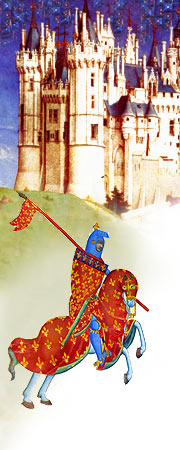English
Castles
The Norman invasion of 1066
did more to bring castles to England than any other event.
When the Duke of Normandy defeated English forces he was crowned
William I, the King of England. One of the weapons William
used was the castle. He brought portable wooden fortifications
with him from France when he invaded. These provided simple
protection until stone fortifications could be erected.
Early English castles exploited the landscape,
using hills as the center of the stronghold whenever possible.
Called "motte and bailey" castles, their wooden
palisade fences rarely provided adequate protection, and other
defensive measures were soon added to castles.
One of the first castles William built
was the White Tower, a fortification so large that it inspired
fear in the inhabitants. This tower would evolve to become
the Tower of London, one of the most famous castles in history.
Land for most English castles was granted by the king in return
for sworn allegiance to the throne. The castle was the centerpiece
of medieval English society, and peasants looked to these
fortifications for protection in time of war. Stone castles
were erected to provide stability and to symbolize the lord's
power in his kingdom.
Many English castles were damaged
or destroyed completely during the Civil Wars of the 1600s.
Cromwellian forces, using gunpowder and artillery, destroyed
centuries of medieval architecture in their attempt to erase
royal influences from the landscape
|






